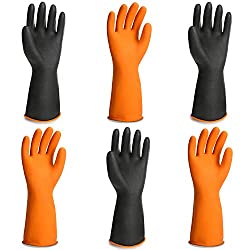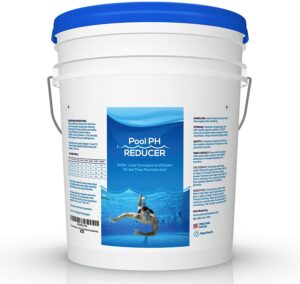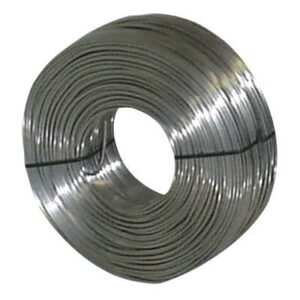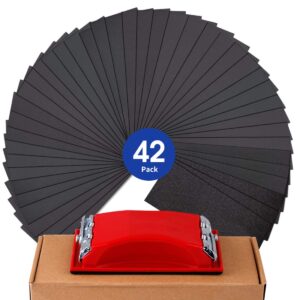Removing rusts from pools can be pretty difficult unless you know the basic guides and steps to follow to remove the stains from you pool surface. Meanwhile, there are a different kind of pools. These pools vary in type and making. Therefore, cleaning the rust in them may also vary.
We have the plaster pools; If you are familiar with these kind of pools, you will observe that it absorbs stain easily. That is, it stains easily than other kinds of pools. This is because the layer of the plaster is quite porous to many stains thus, rough-surfaced may accentuate a stain around the edges.
And you know that the older plaster stays, the more it degrades this means it has t o be acid washed on occasional basis. So as to remove the thin layer of plaster in order to reveal the fresh and unstained plaster underneath.
How To Remove Rust Stains From Vinyl Pool Liner
The Vinyl pools; these kind of pools are less likely to hold in stain. That means they don’t get stained easily. However, certain things like; minerals, organics, metals can form a deposit and stain the vinyl liners or even the plastic in pool steps.
And just as the vinyl liners degrades, it begins to loose more of its resistance to what we call the, UV Ray’s and the chemical degradation thus, fading and staining becomes a more common occurrence.
How To Remove Rust Stains From Fiberglass Pool
We also have the fiberglass pool type; the fiberglass pools are just like the Vinyl liners with a slick and smooth surface that avoids some kinds of stains. However they are not resistant to stains. This is because the gel coat finish, covers the fiberglass shell. And just as the pool begins to degrades, the surface scratches and small cracks, begins to make stains and they are likely to appear.
Furthermore, you need to know that rust stains can be gotten from construction, fasteners used in constructing which may fall into the pool, it can also come from hair pins or Bobby pins, buts and pieces of non-pool toys which have been brought into the water.
The old water pipes may also contribute to rust stains. Because they will carry iron into the pool when adding water. Products that has to do with chlorine can also cause corrosion of iron when placed next to each other. The vinyl pools with rusty steels coping or even rusty walls also have much larger problem to deal with.
READ: How To Clean Paddling Pool Water
One key thing that you need to know before making efforts in removing rust stains is for you to know the source of the rust. Because if the rust is from steel, or any ferrous material then it is important to tackle them first, before removing the stains.
Having pointed out that rust stain happens mostly as a result of steel and ferrous materials, how then does the iron get into the pool?
How To Remove Rust Stains From Swimming Pool Liner
Most times, if the water in your pool comes from a well, then it needs to be purified because the purification exercise, may cause the metal to build-up in the pies and other medium before reaching the pool this, reducing them from any other equipment that passes through in the process, which leads to copper being released into your water.
What does Iron do to pools and swimmers? You may begin to think that the metal/iron build-up in your water may not be harmful but is is. Because, too much ironing your pool, may lead to the walls, the pump, the other equipment as well as the flooring to be stained with rust. This doesn’t stop there. Anyone who swims in the pool may also begin to contend with getting their hair and nails stained as well. Or have irritations or itchy skin.
So how do you even identify rust in your pool water? You see, one of the best ways of identifying rust in your pool water is to take a sample of this pool water to your local pool store to get it tested for metal/iron. Meanwhile, physically you will notice the pool water having something like an oxidized brown tint to it. That is if the iron levels are highly concentrated.
There are several ways in which rust can be removed from your pool water
1. Wear proper protective gear

![]()
See Customer Owner Feedback >>
Then fill up an old tube sock with sodium bisulfate or any granular acid or it is called ‘your regular pH degreaser.’ meanwhile you can also use ascorbic acid/vitamin C. Add about a cup of this acid to the sock, and tie the sock in a firm knot in order to keep the acid contained.
Use your pool pole to position the sock over the stain in your pool, ensure you keep holding it in place that is if the stain is on a vertical wall. Now depending of the size and the age of the rust stain, the acid will begin to absorb the stain within 5-10 minutes.
After this, you can now brush off the stain and acid using a bristled pool brush. Meanwhile keep checking your sock and the stain in order to strike a balance between the rust and the stain removal so that the area around the stain will not be whiter than the other surrounding areas.
2. Another method involves the use of vitamin C tablets

![]()
See Customer Owner Feedback >>
These tablets are made of ascorbic acid. Which is often known as a mild acid that works well for cleaning your pool. Now most rust stains can be removed by rubbing a large tablet of vitamin C over the surface of the stain.
If they are too tiny to be used on the surface, simply put about 20 or 30 tablets in a ziplock bag and crush them with the aid of a hammer. Them pound them completely into a powder form. Finally, sprinkle powder over the rust stain, the grab a pool brush and scrub vigorously.
Another pool stain remover made from ascorbic acid is also called stain free. Now this stain free product is already in a granular form and it is often very useful for treating an entire problem with iron or organic stains.
You can use 1 Ib per 10000 gallons, with low chlorine and a high pH. Meanwhile, adding ascorbic acid will lower the pH of your pool.so stain free product, can also be added to a sock or even be poured into a pipe to treat rust.
3. You can decide to use the pipe method

![]()
See Customer Owner Feedback >>
This includes, placing a 1.5 or about 2inch PVC pipe directly over the stain, and the other end of the pipe, above the water. Then, pour in your acid through the pipe. This can be a dry acid. But don’t use ascorbic acid for this method.
You can also pour in liquid muriatic acid. Then hold the pipe over the stain for about 30 seconds,, then slowly move it in a circular pattern just around the stain. For rust stains that are on the wall, attach an elbow fitting about 90 degrees to the pipe so that you will be able to hold the acid against the vertical surface. Kindly wear protective safety Google’s and gloves before doing this.
4. If you are using a plaster pool, you should know that a rust stain can be caused by a rebar tie wire

![]()
See Customer Owner Feedback >>
And this can be caused by rebar itself. The steel in the pool shell is supposed to be tucked about 4-6 inches below the surface however the bars sometimes, get bent and then, they end up within 1-2 inches of the surface. Then as they age, they become wet and begin to rust to the surface.
The only thing you can do about this is to cutout that particular section of the wall. So with the aid of a diamond blade, cut right through the rebar and then chisel out to a depth that is underneath the rebar. Then coat the ends of the rebar with a rubber sealant. And after tit dried off, simply pack the home with hydraulic cement. After it is dried, cover the top of the hole with a plaster mix, then refill your pool with water again.
5. Sanding blocks or Purnice Stone

![]()
See Customer Owner Feedback >>
If you are using pebble or plaster pools, with an isolated rust stain spot which is not coming from the inside out, you can use sanding blocks or simply use a purnice stone or any long lasting cleaning blocks to scrub the surface.
Meanwhile if you use vinyl or fiberglass pools, using stones or Fri ding wheels may be too much rough for the surface however you can use the Stain Eraser for your vinyl pools. It is like an abrasive rubber that works like a pencil eraser to rub off stains from vinyl and fiberglass pools. It is quite easy to use. Simply attach it to your pool pole and focus on the rust stain area.